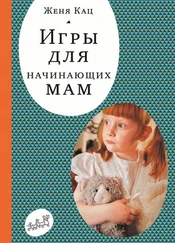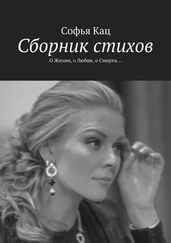• Huang R. S., Dawes J. Price promotions: How much volume is discounted that would sell anyway at the normal price? // Report 43 for Corporate Members. Ehrenberg-Bass Institute for Marketing Science. 2007. December.
• Knutson B. [et al.] Neural predictors of purchases // Neuron. 2007. Vol. 53. № 1. P. 147–156.
• Kraulis R. J. The control of voluntary eye movements: New Perspectives // The Neuroscientist. 2005. Vol. 11. P. 124–137.
• Krugman H. E. The impact of television advertising: learning without involvement // Public Opinion Quarterly. 1965. Vol. 29. № 3. P. 349–356.
• Krugman H. E. Brain wave measures of media involvement // Journal of Advertising Research. 1971. Vol. 11. P. 3–9.
• Krugman H. E. Memory without recall, exposure without perception // Journal of Advertising Research. 1979. Vol. 17. P. 3–10.
• Lamme V. A. F., Roelfsema P. R. The distinct modes of vision offered by feedforward and recurrent processing. Trends in Neurosciences. 2000. Vol. 23. № 66. P. 530–558.
• Lang A. Involuntary attention ad psycho physiological arousal evoked by structural features and mild emotions in TV commercials // Communication Research. 1990. Vol. 17. № 3. P. 275–299.
• Miller M. B., Gazzaniga M. S. Creating false memories for visual scenes // Neuropsychologia. 1998. Vol. 36. № 6. P. 513–520.
• Moore T., Armstrong K. M., Fallah F. Visuomotor origins of covert spatial attention // Neuron. 2003. Vol. 40. P. 671–683.
• Morris J. D. [et al.] The power of affect: predicting intention // Journal of Advertising Research. 2002. Vol. 42. № 3. P. 7–17.
• Mcclure S. [et al.] Neural correlates of behavioural preference for culturally familiar drinks // Neuron. 2004. Vol. 44. P. 379–387.
• Norman H., Romaniuk J., Riebe E. 100 per cent brand loyals exposed // Report 35 for Corporate Members. Ehrenberg-Bass Institute for Marketing Science. 2005.
• Ohme R., Reykowska D., Wiener C. A. Application of frontal EEG asymmetry to advertising research: Sony Bravia case // Journal of economical psychology. Special edition: Decision in neuroscience.
• Rayner K. Eye Movements in Reading and Information Processing: 20 years of research // Psychological Bulletin. 1998. Vol. 124. № 3. P. 372–422.
• Roediger H. L., Mcdermott K. B. Creating False Memories: Remembering words not presented in lists // Journal of Experimental Psychology: Learning, memory and cognition. 1995. Vol. 21. № 4. P. 803–814.
• Romaniuk J., Sharp B. Where knowledge of your brand resides: The Pareto Share of brand knowledge // Report 44 for Corporate Members. Ehrenberg-Bass Institute for Marketing Science. 2008. May.
• Rothschild M. L., Hyun Y. J. Predicting memory for components of TV commercials from EEG // Journal of consumer research. 1990. Vol. 16. № 4. P. 472–478.
• Rothschild M. L. [et al.] EEG activity and the processing of television commercials // Communication Research. 1986. Vol. 13. № 2. P. 182–220.
• Sharp B. How brands compete // Report 39 for Corporate Members. Ehrenberg-Bass Institute for Marketing Science. 2006.
• Siefert C. [et al.] Biometric and eye-tracking insights into the efficiency of information processing of television advertising during fast-forward viewing // International Journal of Advertising. 2008. Vol. 27. № 3. P. 293–303.
• Silberstein R. B. The steady state visually evoked potential as a window into brain functional connectivity associated with cognition // International Journal of Psychophysiology. 2006. Vol. 61. № 3. P. 317–317.
• Silberstein R. B., Nield G. E. Brain activity correlates of consumer brand choice shift associated with television advertising // International Journal of Advertising. 2008. Vol. 27. № 3. P. 359–380.
• Squire L. R. Memory and the Hippocampus: A Synthesis from findings with rats, monkeys and humans // Psychological Review. 1992. Vol. 99. № 2. P. 195–231.
• SoltanI M., Knight R. T. Neural origins of the P300 // Critical Reviews in Neurobiology. 2000. Vol. 14. № 3–4. P. 199–204.
• Srull T. K. Affect and memory: the impact of affective reactions in advertising on the representation of product information in memory // Advances in Consumer Research. 1983. Vol. 10. № 1. P. 520–524.
• Vaktratsas D., Ambler T. How advertising works: what do we really know // Journal of Marketing. 2009. Vol. 63. P. 26–43.
• Vaugh R. How advertising works: a planning model revisited // Journal of Advertising Research. 1980. Vol. 20. P. 27–33.
• Weinstein S., Apple V., Weinstein C. Brain activity responses to magazine and television advertising // Journal of Advertising Research. 1980. Vol. 20. P. 57–63.
Английская фирма Laura Ashley – мировой лидер по изготовлению классической модной одежды и созданию необычных интерьеров. Этот бренд предпочитают в аристократических кругах. – Примеч. редактора.
Айтрекинг (eye-tracking) – технология отслеживания движения глаз. – Примеч. переводчика.
Information Technology Limited (ITL) – британский разработчик и производитель компьютеров в 1980-е годы. – Примеч. переводчика.
МРТ (fMRI) – функциональная магнитно-резонансная томография, технология исследования активности головного мозга. – Примеч. переводчика.
Fair Trade Coffee (справедливо купленный кофе) – кофе, купленный без посредников у вырастивших его фермеров, объединенных в кооперативы, обязующиеся гарантировать лучшие условия труда на своих плантациях. – Примеч. переводчика.
1 кв. фут = 929 кв. см, т. е. примерно 1/10 кв. м; таким образом, 6000 кв. футов равны примерно 600 кв. м. – Примеч. переводчика.
Британская сеть супермаркетов. – Примеч. редактора.
В память о чудесном спасении двух женщин из Халлатона от разъяренного быка ежегодно проводят шествие с тремя маленькими деревянными бочонками (bottle). В двух из них пиво, а третий сделан из цельного куска дерева и раскрашен под цвет первых двух. Далее участники шествия делятся на две команды по территориальному признаку и перекидывают друг другу три бочонка, пытаясь доставить их в свою деревню. Соревнования бывают довольно жесткими. – Примеч. редактора.
Читать дальше
Конец ознакомительного отрывка
Купить книгу












